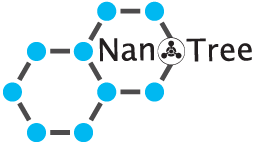A specialist company dedicated to supplying quality chemicals and processing aids.
Organics Removal
Naturally occurring dissolved organics collectively measured as TOC (Total Organic Carbon), COD (Chemical Oxygen Demand) or BOD (Biological Oxygen Demand) can foul and affect the performance of ion exchange demineralization plants. This kind of problem is normally associated with plants that treat surface waters which contain either naturally occurring or synthetic organics. Manmade organic material normally enters the supply via drains as the rivers pass through towns or industrial areas. In all cases these organic fouling materials have a large molecular weight and are usually hydrophobic in nature. The naturally occurring organics are often referred to generally as Humates and Fulvates. These large, complex organic molecules are attracted and captured on ion exchange resins, resulting in irreversible fouling, particularly of strong base anion resins.
Organic fouling occurs on anion exchange resins because:
- Organics accumulate on the resin by ion exchange and physical (Van der Waal’s) forces
- Exchange sites become blocked by the accumulated organics
When organic fouling occurs, there will be a reduction in demineralization plant efficiency overall. The speed of ion exchange especially for multivalent anions like sulfate is slowed down (kinetic impairment). Long alkaline rinses after caustic regeneration are typically encountered due to slow hydrolysis of sodium off the accumulated organic foulants. As a consequence, the treated water quality will be reduced with higher conductivity and higher silica and sodium leakages. The operating costs will increase, due to shorter cycles and higher rinse water and regenerant requirements.
In general, anion exchange resins remove natural organic matter (NOM) from water particularly well, but unless care is taken in the selection of the anion exchange resin plus in certain cases the correct pretreatment process, rapid fouling of the resin can occur, and this fouling is often irreversible.
The best organic scavenger resins normally have a macroporous structure (though some gel scavenger resins do exist) and they are normally manufactured from either polystyrenic or polyacrylic polymers. The Purolite® macroporous, polystyrenic based product is Purolite® A502P and the macroporous, polyacrylic based product is Purolite® A860. Food grade versions A502PS and A860S are also available and widely used in the food industry and potable water applications. In general terms, the polyacrylic based resin often offers a greater reversible removal of organics on regeneration (due to their more hydrophilic structure) and can therefore often cope better with higher levels of dissolved organics. The polystyrenic resin can often reduce dissolved organics down to lower levels, but it is less easy to regenerate (more hydrophobic structure) and so can be more prone to irreversible fouling.
Due to their different structures and slightly different performance, many plants now include a combination of both these resins, with a 50:50 ratio employed. Using a bed containing two different polymer structures frequently offers the best removal of organics. When used together in a single column in a conventional co flow regenerated plant, the Purolite® A502P is loaded first into the bottom of the unit with the Purolite® A860 on top. Some mixing will inevitably occur, but there is an advantage in having the water passing through the polyacrylic resin first as this portion of the bed will see the higher organic loading.
For proper selection please call the friendly Nano Tree sales specialist.


